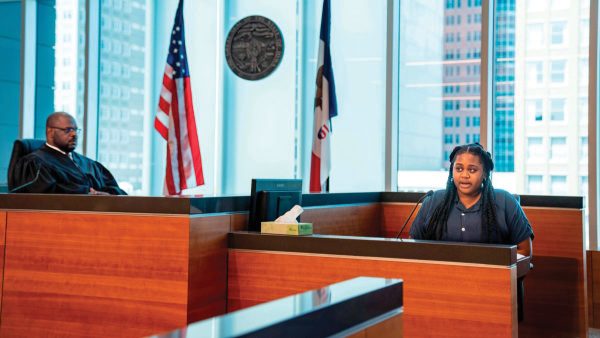Seybert: Teach ASL in schools
Sep 10, 2020
This world is full of sounds, even ones we don’t think about–the clacking of a keyboard, birds chirping, background conversations. For a hearing person, these little sounds are taken for granted every day. Yet for Deaf people, these little noises go entirely unnoticed. Deaf people cannot hear things a hearing person wouldn’t think twice about; they cannot hear their friends laughing, listen to music without a heavy beat, or even hear their own names. Without being able to hear their peers, Deaf people often get left out of hearing conversations. To combat this feeling of social and cultural commission, Deaf people developed American Sign Language (ASL) as a means of communication.
ASL is a visual language that has been used in the American Deaf community since the 1800s. Before then, Deaf people were only able to communicate through gestures, lip-reading, and writing. Even then, they were still frequently left out of conversations with their hearing counterparts, as ASL was not yet widely taught to those outside of the Deaf community (or sometimes, even those within it). It was just assumed that these people were incapable of communicating with others, even though they were perfectly capable–they just couldn’t hear.
Since the 1800s, ASL has made miraculous strides and is now widely used among the Deaf community. Even so, hearing people are often not given the chance to learn the beautiful language until college; while learning ASL in college is better late than never, waiting for so long to teach it may actually do more harm than good. According to Scientific American, fluency in a foreign language is easiest to achieve if the language is taught before the age of 18. This means that if someone waits to learn a new language until after the age of fluency, they will struggle to grasp the grammatical structures or subtle nuances of the language. Most likely, they will never be able to learn the language as well as a native speaker.
However, ASL is generally only offered in schools at the collegiate level, which only makes it harder on the hearing community to learn and the Deaf community to understand. After all, what is the point of learning a new language if it is effectively unusable? Not only that, but American elementary schools often offer courses in languages such as Spanish, French, or even Latin–why did ASL not make the cut?
If society as a whole ever wants to build a bridge between the Deaf and hearing communities, it has to offer ASL in schools. It would allow Deaf people to be included in the narrative (and make it much easier for them to learn instead of being forced to lip-read) and hearing people to learn a beautiful new language. It could also help hearing people advocate for the Deaf community if necessary, something that happens all too infrequently in the world. Everyone has a voice, both Deaf and hearing alike, and teaching ASL in schools is the first step to making them heard.

















